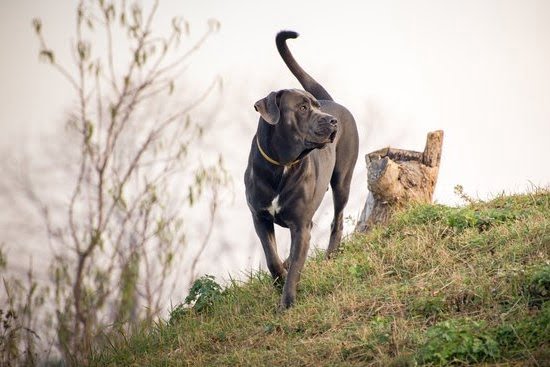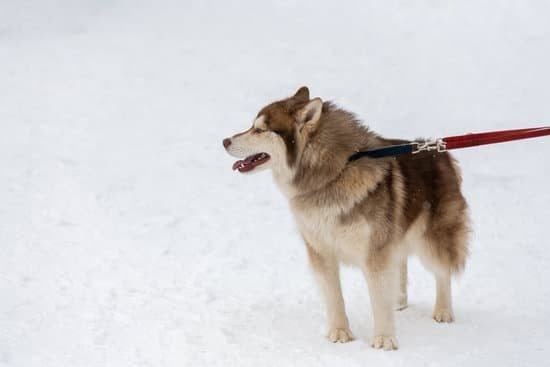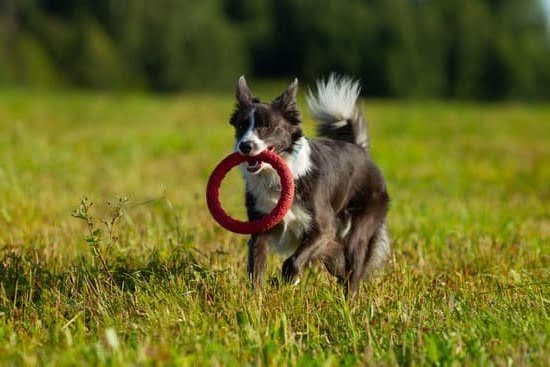When it comes to owning a dog, socialization with people is a crucial aspect of their overall behavior and well-being. Knowing how to train a dog to be used to people is essential for creating positive interactions and preventing fear or aggression towards strangers. By implementing effective socialization techniques and consistent training schedules, dog owners can help their furry companions feel more comfortable and confident in various social settings.
Choosing the right methods for socializing your dog with people is key to fostering a strong bond between your pet and those they encounter. Whether it’s exposing them to different environments, introducing them to new faces gradually, or utilizing positive reinforcement techniques, there are various ways to help your dog feel at ease around strangers.
By setting a solid foundation through early socialization, you can help prevent behavioral issues and build trust between your dog and the people they meet.
It’s important to understand each dog’s individual needs when it comes to socializing them with people. Some dogs may exhibit fear or anxiety around unfamiliar individuals, which requires patience and understanding from their owner.
By addressing these emotions through obedience training and gradual exposure, you can help your dog feel more secure in various social situations. Monitoring progress and adjusting training methods as needed will ensure that your furry friend continues to develop positive relationships with people throughout their lives.
Choosing the Right Socialization Techniques
Socializing your dog with people is an essential aspect of their training and overall well-being. It helps them become more adaptable, confident, and friendly in social settings. To achieve this, it is crucial to choose the right socialization techniques that work best for your furry friend. Here are some effective methods to consider:
- Exposure to different environments: One way to help your dog get used to people is by exposing them to various environments such as parks, cafes, or pet-friendly stores. This can help them feel comfortable around new faces and situations.
- Positive reinforcement: Using positive reinforcement techniques like treats, praise, or toys can motivate your dog to interact with people in a positive manner. Rewarding good behavior will encourage them to repeat it.
- Group training classes: Enrolling your dog in group training classes can be beneficial for socialization. It allows them to interact with other dogs and people in a controlled environment, helping them build confidence and learn how to behave around different individuals.
When considering the right socialization techniques for your dog, remember that every pup is unique and may respond differently to various methods. It’s essential to observe your dog’s behavior closely and adjust the training approach accordingly. By taking the time to choose the appropriate techniques tailored to your dog’s needs, you can effectively train them to be used to people in a positive and stress-free way.
Ordering specific practices on how to train a dog actually falls under many methods including:
- Gradual exposure: Slowly introducing your dog to new people at their own pace can help prevent overwhelming situations that may lead to fear or anxiety.
- Social walks: Taking your pup on regular walks where they can encounter different individuals allows them to practice their social skills in a controlled environment.
- Desensitization exercises: If your dog shows signs of fear or anxiety towards certain individuals, implementing desensitization exercises by gradually exposing them from a distance can aid in reducing their discomfort over time.
Setting a Consistent Training Schedule
Dogs thrive on routine and structure, making a consistent training schedule essential when teaching them to be used to people. By establishing a regular routine, you can help your dog feel more comfortable and confident in social situations. Consistency also helps reinforce positive behaviors and allows your dog to gradually become more familiar with interacting with different individuals.
Creating a Training Schedule
When setting a training schedule for your dog, it is important to start with short and frequent sessions. Aim for daily interactions with people, gradually increasing the duration as your dog becomes more comfortable. Consistency is key, so try to stick to the same time each day for training sessions. This will help your dog develop a sense of predictability and stability, which can reduce anxiety in social situations.
Building Confidence Through Routine
Consistent training sessions not only help familiarize your dog with being around people but also build their confidence over time. Through regular exposure to different individuals, your dog will learn that meeting new people is a positive experience. As you progress through the training schedule, you may notice your dog becoming more relaxed and less fearful around strangers. The repetition of interactions will reinforce positive behaviors and eventually make your dog more at ease in various social settings.
By maintaining a structured training schedule focused on socializing your dog with people, you are laying the foundation for successful interactions in the future. Remember that every dog is unique, so be patient and adaptive in your approach based on your pet’s progress. With dedication and consistency, you can effectively train your dog to be comfortable and accustomed to being around different individuals.
Introducing Your Dog to Different People Slowly
When it comes to training your dog to be used to people, one of the key aspects is introducing them slowly and gradually. Jumping into interactions with strangers can be overwhelming for a dog, especially if they have not had much exposure to different individuals before. By taking small steps and increasing their exposure over time, you can help your furry friend feel more comfortable and confident around new people.
Start With Familiar Faces
Begin by introducing your dog to family members and close friends who they may already be somewhat familiar with. This will help ease them into socializing with people outside their immediate circle. Encourage these individuals to interact positively with your dog, offering treats or belly rubs as a way to create positive associations.
Slowly Expand Their Social Circle
Once your dog seems more at ease around familiar faces, start introducing them to new people one at a time. Choose individuals who are calm, patient, and willing to follow your guidance on how to interact with your pup. Gradually expose your dog to a variety of ages, genders, and appearances to help them feel comfortable around different types of people.
Provide Positive Reinforcement
During these introductions, make sure to reward your dog for good behavior with treats or praise. Positive reinforcement will help reinforce the idea that interacting with people leads to positive outcomes. If your dog shows signs of fear or anxiety, do not force them into interactions but instead give them space and time to adjust before trying again. Remember that patience is key when training a dog to be used to people.
Using Positive Reinforcement to Encourage Interaction
Positive reinforcement is a powerful tool when it comes to training your dog to be comfortable around people. By rewarding your dog for calm and positive interactions with individuals, you can help them build a positive association with human presence. Treats, praise, toys, or any other rewards that your dog enjoys can be used to reinforce good behavior. This will teach your dog that being around people leads to positive outcomes, making them more at ease in social situations.
Consistency is key when using positive reinforcement to encourage interaction between your dog and people. Make sure that everyone who interacts with your dog follows the same rules and uses the same rewards. This will help reinforce the desired behavior and prevent confusion. Additionally, be patient and give your dog time to adjust to new people and environments. With consistent positive reinforcement, your furry friend will learn that interacting with people is a pleasant experience.
Incorporating positive reinforcement into your training routine not only helps your dog become more sociable but also strengthens the bond between you and your pet. Remember to keep training sessions short, fun, and rewarding for both you and your canine companion. With patience, consistency, and the right approach, you can successfully train your dog to be used to people in a positive and effective manner.
| Positive Reinforcement Tips | Effective Outcomes |
|---|---|
| Rewards for calm interactions | Builds positive association with people |
| Consistency in rewards | Reinforces desired behavior |
| Short, rewarding training sessions | Strengthens bond between owner and dog |
Addressing Fear and Anxiety in Dogs
It is important to address fear and anxiety in dogs when training them to be used to people. Dogs, like humans, can experience fear and anxiety when put in unfamiliar situations or environments. This can hinder their socialization with people and lead to behavioral issues if not addressed properly. Here are some tips on how to help your dog overcome fear and anxiety:
1. Identify Triggers: The first step in addressing fear and anxiety in dogs is to identify the triggers that cause these emotions. It could be specific sounds, smells, or experiences that make your dog uncomfortable around people. By recognizing these triggers, you can better prepare your dog for socialization training.
2. Gradual Exposure: Once you have identified the triggers, it is important to expose your dog gradually to these situations. Start with small interactions with a trusted person and slowly increase the exposure over time. This gradual approach will help build trust with your dog and reduce their fear and anxiety.
3. Positive Reinforcement: Use positive reinforcement techniques such as treats, toys, or praise when your dog exhibits calm behavior around people. This will help associate positive experiences with socialization and encourage your dog to interact more confidently with others.
By addressing fear and anxiety in dogs through gradual exposure, positive reinforcement, and identifying triggers, you can effectively train your dog to be used to people. Remember that every dog is unique, so patience and consistency are key when implementing these techniques into your training routine.
Implementing these strategies will not only help improve your dog’s socialization skills but also strengthen the bond between you and your furry friend. With time, patience, and the right approach, you can help your dog overcome their fears and anxieties around people.
Implementing Obedience Training to Build Trust
Obedience training is a crucial aspect of helping dogs become more comfortable and familiar with people. By teaching your canine companion basic commands such as sit, stay, come, and heel, you are not only establishing good behavior but also building trust between you and your dog.
Consistent obedience training provides structure and boundaries for your dog, which can help reduce anxiety in social situations. This training instills confidence in your furry friend and helps them feel secure when interacting with new people.
One effective way on how to train a dog to be used to people through obedience training is by using positive reinforcement techniques. When your dog follows a command correctly during social interactions, reward them with treats, praise, or toys. Positive reinforcement encourages good behavior and helps dogs associate being around people with positive experiences. Over time, your dog will learn that being around different individuals results in rewards, making them more willing to engage with new faces confidently.
Another key aspect of obedience training to build trust is consistency. Establishing a regular schedule for training sessions helps create a routine for your dog and reinforces the importance of following commands consistently. By dedicating consistent time each day to work on obedience training exercises related to interacting with people, you are creating a safe environment for your dog to practice social skills gradually. With patience and ongoing practice, your canine companion will become more at ease around unfamiliar individuals.
| Aspect | Information |
|---|---|
| Obedience Training Benefits | Helps establish trust between dogs and people. |
| Positive Reinforcement | Rewards good behavior during social interactions. |
| Consistency | Regular training schedule creates routine for the dog. |
Monitoring Progress and Adjusting Training Methods When Necessary
In conclusion, training a dog to be comfortable and social around people is a rewarding but gradual process that requires patience and consistency. Understanding the importance of socializing dogs with various individuals is crucial for their overall well-being and behavior. By choosing the right socialization techniques and setting a consistent training schedule, pet owners can effectively help their furry companions adjust to different environments and interactions.
Introducing your dog to different people slowly is key in preventing any overwhelming situations that may trigger fear or anxiety. Using positive reinforcement to encourage interaction reinforces positive behavior and builds trust between the dog and the individuals they encounter. Addressing any fear or anxiety issues promptly can also help in creating a more relaxed environment for the dog to thrive in.
Moreover, implementing obedience training not only helps in building trust between the dog and its owner but also establishes boundaries and guidelines for proper behavior. Monitoring progress throughout the training process is essential, as it allows pet owners to assess what works best for their dog and make necessary adjustments when needed.
Ultimately, by following these steps on how to train a dog to be used to people, pet owners can ensure that their four-legged friends become well-socialized and friendly companions in any setting.
Frequently Asked Questions
How Do I Train My Dog to Be Friendly With People?
Training your dog to be friendly with people starts with socialization at a young age. Expose them to different environments, people, and situations in a positive way. Use treats and praise to reinforce good behavior when they interact positively with others.
How Do You Train a Dog to Get Used to People?
To train a dog to get used to people, start slowly by introducing them to one new person at a time in a calm environment. Gradually increase the exposure as they become more comfortable, always rewarding them for calm behavior. Patience and consistency are key.
How Do I Get My Dog Used to Other People?
Getting your dog used to other people requires patience and positive reinforcement. Start by having friends or family members visit your home regularly, allowing your dog to become familiar with new faces in a safe space. Encourage interaction through play or training exercises to build trust and comfort with others over time.

Welcome to the blog! I am a professional dog trainer and have been working with dogs for many years. In this blog, I will be discussing various topics related to dog training, including tips, tricks, and advice. I hope you find this information helpful and informative. Thanks for reading!





